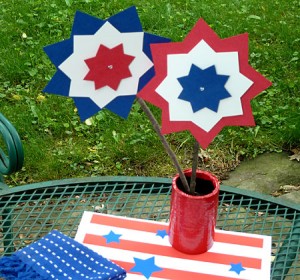 |
| Get this stunning piece here. |
You'll remember I took awesome notes from Jeff Savage's and Gregg Luke's conference session on
VILLAINS last May. Their breakdown on the topic is definitely worth a read.
Lately, I've been thinking about villains again, since my dream-to-book project has a pretty tempting villain. He's beautiful and charismatic, warm and affectionate - and too perfect. It's supposed to be this way because it's the reason our heroine doesn't see what he really is until it's almost too late, but it got me thinking about cliche villains. Why do we gravitate toward villain cliches?
I think it's because
a) all evil is evil and
b) we thrive on symbols.
a) All evil is evil:
This means we come to associate one evil guy with another evil guy, even if they're actually very different. We do this in our daily lives, shying away from the cocky surfer dude because we were seriously wounded by a cocky surfer dude in the past (Jace Wayland, anyone?). So it's natural that we'll do the same thing in storytelling. We create universal villains, people with traits we all associate with evil tendencies.
In children's stories, villains are historically either really fat and gluttonous or really skinny and creepy emaciated, like there's no life in them and they have to feed off other people. Cliches almost always deal in extremes. The challenge is to personalize them, make them unique.
In young adult stories, the bad guy tends to be super charismatic and often extra confident, like Aro in Twilight or Sebastian in the Mortal Instruments series. This is probably because so many of us have been burned by the popular guy in high school. We easily believe that guy is rotten deep down, and it kind of helps us get over hurt feelings to imagine him that way.
Often the bad guy is deluded, seduced by power or principles to take things too far the other way. Sometimes he's straight-up crazy. But he's always evil, and he's always powerful.
He has to be powerful.
We need to fear him, or at least fear for the protagonist of the story, and we can't do that if the bad guy is overly goofy. That's why in Meet the Robinsons (Disney movie), there's the hard-to-fear Bowler Hat Guy, but his scariness is solidified by the bowler hat itself, Doris, who's actually a vindictive robot bent on annihilating the happy future our protagonist wants to create.
b) We thrive on symbols
If somebody has a pet raven, it's easy to suspect them of evil doings. Ravens are historically the harbingers of death and bad luck. Conversely, when Dumbledore has a pet phoenix, we think he's the coolest guy in the world and kind of invincible, since a phoenix can rise from its own ashes.
Clothes: Your villain doesn't have to wear black cloaks all the time, but clothing and jewelry are opportunities (often missed opportunities) to plug in villainous symbolism.
For instance, a guy wearing a ring that looks like a snake biting its own tail is probably bad news. Anybody with a collection of skull charm bracelets should be on the reader's terror alert list. One of my villains wears a black leather jacket even though my story takes place in temperate weather. This gives the protagonist something to look out for (and be afraid of), and it also makes the villain a bit more menacing.
On the other hand, you can use these cliches to trick the reader, and they love it. The guy with the skull charm bracelet is just misunderstood. The real bad guy wears polo shirts and a class ring. But be careful how you do that, because the opposites thing can be just as cliche these days. You can do the double agent thing: guy wears an upside-down pentagram around his neck, which the heroine thinks is cool, and she thinks her mom is dumb for suspecting him of devil worship... until he ends up trying to sacrifice her once he finds out she's a virgin. That way you have her think he could be bad, but he's not, but he really is. Double agent.
Scars. Bad guys have scars. But then, so does Harry Potter. The trick is knowing as the writer where the scar came from. Maybe your rotten dude wants everyone to think he's really bad-A, but secretly he got that slash across his face from a freak can-opener accident.
Maybe that gray streak in his greased black hair is comb-in dye.
There are endless ways to tweak cliches to work FOR you rather than against you. So give it a spin.
Who's your favorite fictional villain?


























